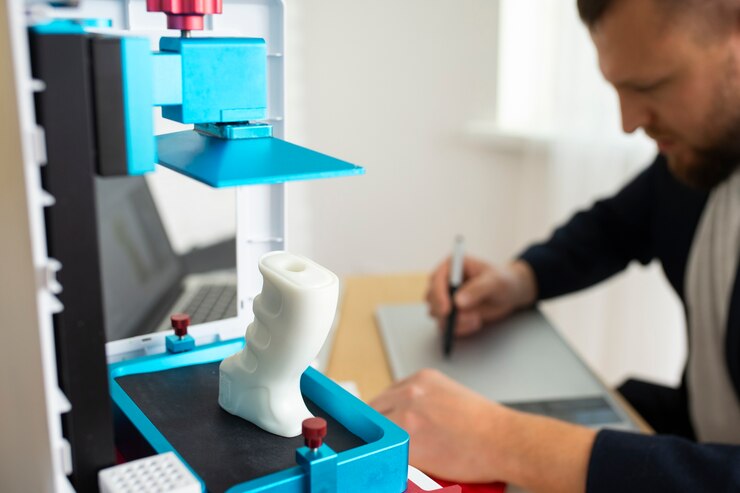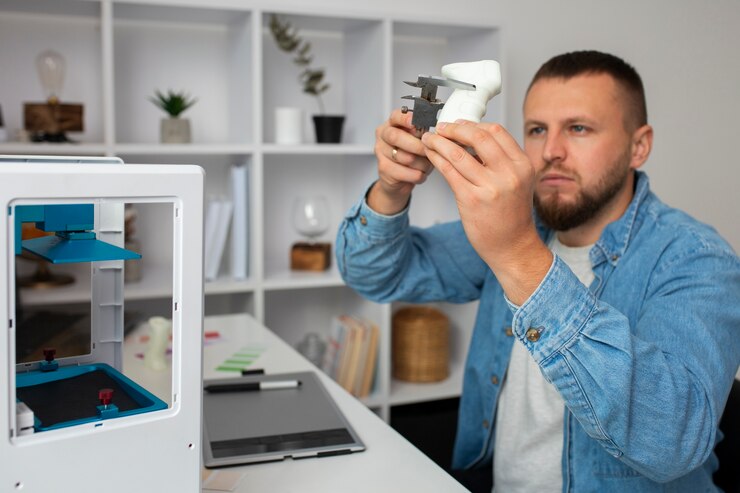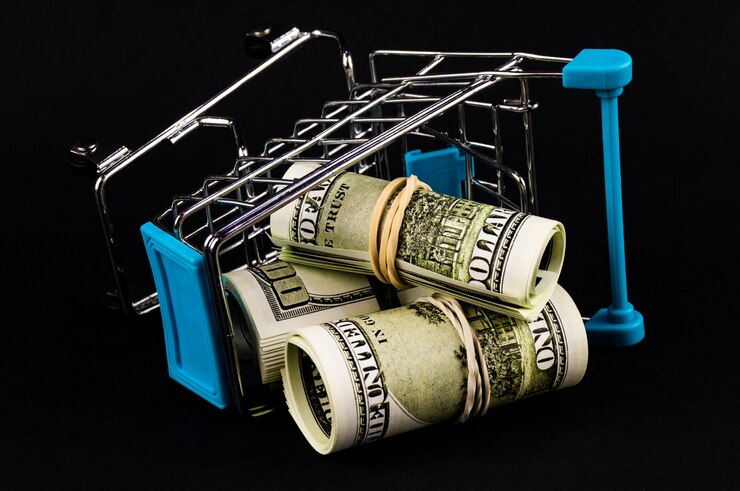Additive manufacturing, also called 3D printing or rapid prototyping is the new way to go about manufacturing. Businesses can use this technology to create prototypes, parts and finished products in an efficient manner which leads to cuts in costs and reduces waste. Given the location of these companies within San Diego, 3D printing allows them to explore new and better ways of slashing costs while maintaining their competitiveness in their respective industries. This correspondence investigates how 3D printing affects reduction of cost during the various stages such as prototyping and mass production as well as how you can apply the said technology into your business.
The Cost Advantages of 3D Printing
Cut Down Waste of Materials
Machining, injection molding and other methods of manufacturing tend to have a lot of waste of material. In comparison, 3D printing is fundamentally different because it additionally builds an object using only the amount of material that is needed resulting in a massive reduction of waste. The effect is a reduction in the cost of raw materials.
Cheaper Prototyping
Prototyping using traditional techniques is always expensive and a long process. This is totally different with 3D printing which allows for rapid prototyping which helps to quickly adjust designs with little cost involvement. This is an important factor to San Diego based technology and biotech firms.
Reduced lead times By removing the requirement for molds or specific tooling, 3D printing greatly shortens production lead times. Faster turnaround: This is important because businesses can get a product to market faster, saving on overhead associated with a drawn-out development cycle.
On-Demand Production Companies do not have to produce large batches with 3D Printing, as it allows to optimize warehouse costs. This model lowers the costs of inventory and minimizes the danger of remaining on the shelves.

Ways of Lowering Prices With 3D Printing
Select the Right Material
You have a great degree of control over costs depending on the materials you use for 3D printing. The most common are PLA, ABS, TPU and nylon. Metal 3D printing materials expensive, including stainless steel or aluminum, but perfect for high-performance material. Consider your application needs in order to select an economical material that does not sacrifice quality.
Design for Additive Manufacturing (DfAM)
Optimize Designing for additive manufacturing (DfAM) is all about optimizing your parts for the 3D printing process. Reducing geometries, hollowing, and reducing material wherever feasible will help in lowering the print costs. Skipping Out on Expertise San Diego Design Services
Utilize Local 3D Printing Services
Outsourcing 3D printing to local providers in San Diego reduces the shipping and 3D printing logistics cost. For example, out of all the companies in the region, many companies provide advanced 3D printing services to many industries such as aerospace and healthcare.
Enable Consolidation
Parts can be created as complex assemblies in one go, thereby reducing the number of parts. Not only does this make production easier, it also saves on assembly and labor costs.
Invest in the Right Equipment
For businesses that have frequent 3D printing needs, investing in a trustworthy printer can bring long-term cost savings. Explore models that can support your production needs, factoring in the total cost of ownership as well, including maintenance and material costs.

Applications to the Real World in San Diego
3D printing is already helping San Diego’s industries lower costs:
Biotech: Local biotech companies use 3D printing for lab equipment and custom tools, saving money compared to expensive commercial off-the-shelf solutions.
Aerospace: Aerospace companies use metal 3D printing to manufacture lightweight components and prototypes, achieving lower material costs and shorter lead times.
Healthcare: 3D printing is used by hospitals and clinics to produce customized medical devices and surgical guides, leading to better patient outcomes and lower production costs.
Consumer goods: Startups and small businesses in San Diego design unique photo and personalized products without the high overhead from traditional manufacturing methods.
The Benefits Beyond Cost Savings
3D printing does provide other benefits, though saving money is the main motivator:
Businesses often have strict green standards and to operate under them, less waste and energy consumption would comply with their mandates.
FLEXIBILITY: On-demand production to quickly modify to market requirements.
Innovation: Enabling new designs and materials to be tested without the cost risk of traditional approaches
Overcoming Challenges
However, in order for businesses to realize the cost-saving potential of 3D printing, there are some common hurdles to overcome:
Learning Curve: There might be a learning curve involved, so invest in training or consider hiring experts to maximize the benefits.
Upfront Cost: While 3D printers can be expensive at first, the savings over time typically make it worthwhile.
Material Constraints: Verifying that the selected materials fulfill the performance requirements for your use case.
Steps to Get Started
Evaluate Your Needs: Determine where in your business 3D printing will add the most value.
Seek Professional Advice: Collaborate with local San Diego based 3D printing experts to find suitable solutions for your specific industry.
Start small: Make small projects to measure for cost benefits before investing on a large scale.
Gradual Adoption: Start using 3D printing in other parts of your operations once you have become comfortable and skilled with it.
Future Outlook
The fall in costs is only expected to continue as 3D printing technology advances. Improved materials, incremental speed increases from printers and smarter software will make it more widespread and more affordable. San Diego–based companies stand to gain significantly from these technologies, with the city’s robust network of tech-oriented businesses and support services.
What are the cost-saving benefits of 3D printing?
Increased efficiency and reduced material waste as compared to traditional manufacturing, along with reduced lead time, no supplier or tooling requirements, the ability to produce on-demand means lower total costs.
How Do San Diego Businesses Benefit From Local 3D Printing Services?
There are plenty of SAN DIEGO 3D printers that provide different industries, reducing logistics and accelerating.
What are the best materials for cost-effective 3D printing?
PLA and ABS are popular for affordability, while materials like TPU and PETG offer durability. Metal options like aluminum are costlier but ideal for industrial applications.
Should a small business invest in a 3D printer?
For businesses with consistent 3D printing needs, investing in a printer can lead to significant long-term savings, though outsourcing may be better for occasional use.
What industries leverage 3D printing the most in San Diego?
Industries including biotech, aerospace, healthcare and consumer goods use 3D printing across San Diego.






